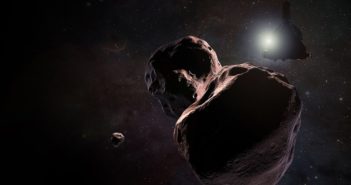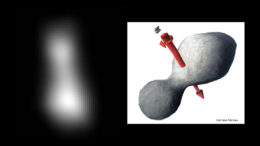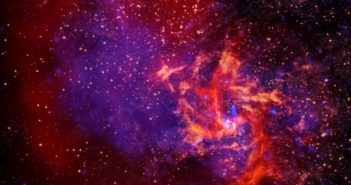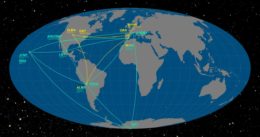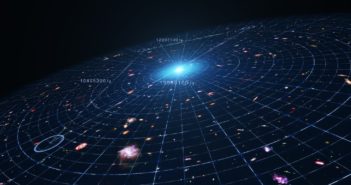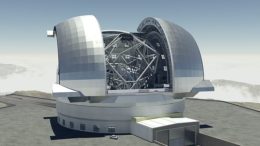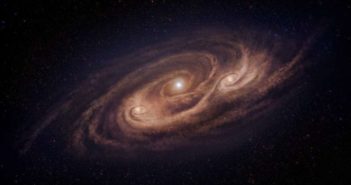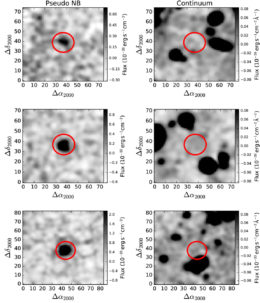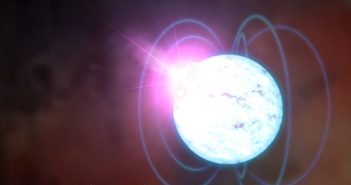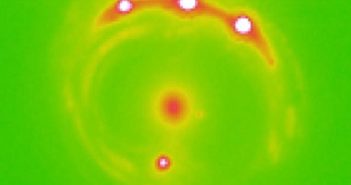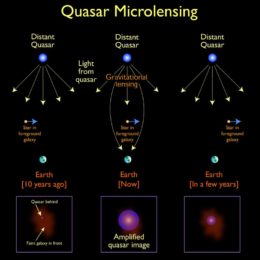
Are Fast Radio Bursts from Flaring Magnetars?
Could the mysterious fast-radio-burst signal FRB 121102 be emitted from a flaring, strongly magnetic neutron star? In a new study, two scientists explore the evidence.
Mysterious Signals
More than a decade ago, a powerful burst of coherent radio emission lasting only a few milliseconds mystified astronomers. The dispersion of the signal — the delay of its component frequencies by different amounts of time, depending on the wavelength — indicated that this pulse came from beyond our galaxy. But what was it?
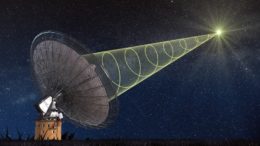
Artist’s impression of a fast radio burst observed by the Parkes Radio Telescope. [Swinburne Astronomy Productions]
These accumulating clues all address a broad mystery: what object could be responsible for the bursting and steady emission we observe? What is the source of an FRB?
A Magnetized Solution
Two scientists at Columbia University, former graduate student Ben Margalit (now a NASA Einstein Postdoctoral Fellow at UC Berkeley) and advisor Brian Metzger, recently proposed an explanation for FRB 121102: perhaps this source is a young, flaring, highly magnetized neutron star that is embedded in a decades-old supernova remnant.
Neutron stars are dense cores left behind after a star’s spectacular death in a supernova or a gamma-ray burst. In particular, a magnetar is a type of neutron star with an extremely powerful magnetic field that causes flares and bursts early in the object’s life. Such flares from a distant young magnetar, Margalit and Metzger argue, could explain the FRB signals we observe.
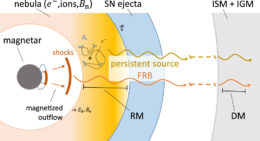
Schematic of the authors’ model, in which a young, flaring magnetar is embedded in a magnetized nebula trapped behind the shell of supernova ejecta. Electrons in the magnetized nebula emit the persistent radio radiation, and the nebula leaves an imprint on the burst emission — which originates from the magnetar — as well. [Margalit & Metzger 2018]
As a final piece of the puzzle, the authors point out that the identified home for FRB 121102 is consistent with the type of galaxy in which magnetars often form. Such small galaxies with high specific star formation rates are known to preferentially host long gamma-ray bursts and superluminous supernovae, events in which magnetars are born.
Predicting the Future
To test their theory, Margalit and Metzger develop a detailed time-dependent model of an expanding, magnetized electron-ion nebula inflated by a flaring, young magnetar. They then show that the energetics of their model beautifully match the properties of both the bursting and persistent radio emission from FRB 121102.
Does this mean the mystery’s solved? We can’t say for sure yet — but the authors make specific predictions for future observations of FRB 121102 that will provide a robust test of their model. In addition, the very recent discovery of a second repeating burst, FRB 180814.J0422+73, will hopefully allow us to further explore these mysterious sources and confirm their origin.
Citation
“A Concordance Picture of FRB 121102 as a Flaring Magnetar Embedded in a Magnetized Ion–Electron Wind Nebula,” Ben Margalit and Brian D. Metzger 2018 ApJL 868 L4. doi:10.3847/2041-8213/aaedad

